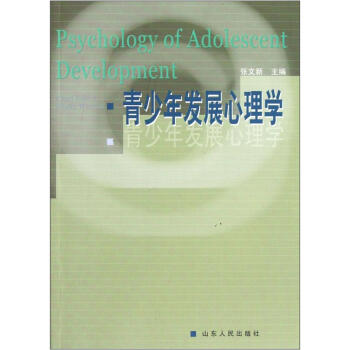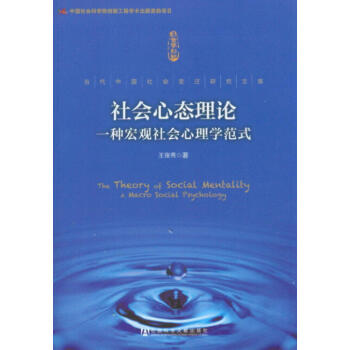具体描述
内容简介
《青少年发展心理学》的目的在于系统地阐述青少年阶段个体心理发展的基本规律与特点,较为全面地反映国内外青少年发展研究的新理论和新进展,以促进我国青少年心理学的学科建设,同时为广大青少年工作者、教师和家长深入了解青少年心理发展的规律与特点、促进青少年健康发展提供一本有益的读物。 目录
前言
第一章 绪论
第二章 青少年心理发展的理论流派
第三章 青少年的生理发展
第四章 家庭与青少年的发展
第五章 青少年的同伴关系
第六章 青少年的认知发展
第七章 青少年社会认知的发展
第八章 青少年的情绪和情感
第九章 青少年自我的发展
第十章 青少年的道德发展与价值观
第十一章 青少年性别角色和性心理的发展
第十二章 青少年的心理社会问题
参考文献 前言/序言
《青春的密码:探索成长中的自我与世界》 adolescence and adulthood. This comprehensive exploration delves into the multifaceted journey of becoming, examining the intricate interplay of biological, psychological, and social forces that shape the developing adolescent. It aims to equip parents, educators, and young people themselves with a deeper understanding of the profound transformations occurring during these pivotal years, fostering empathy, effective guidance, and empowered self-discovery. The book begins by grounding the reader in the biological underpinnings of adolescent change. It unravels the complex hormonal shifts that orchestrate physical maturation, from the dramatic surges of puberty to the subtle rewiring of the brain. This section will not shy away from the tangible manifestations of these changes, exploring everything from the emergence of secondary sexual characteristics to the heightened emotional sensitivity that can accompany hormonal fluctuations. Crucially, it will connect these biological processes to observable behavioral patterns, helping readers understand why adolescents may exhibit increased risk-taking, impulsivity, or a greater focus on social connection during this period. The text will emphasize that these changes, while sometimes challenging, are fundamental to the maturation of cognitive abilities, emotional regulation, and social engagement. Moving beyond the purely biological, 《青春的密码》 then embarks on a journey into the evolving adolescent mind. It meticulously dissects the development of cognitive abilities, tracing the transition from concrete thinking to abstract reasoning. Readers will gain insight into the maturation of the prefrontal cortex, the brain's executive control center, and understand how this ongoing development influences decision-making, problem-solving, and the capacity for foresight. The book will explore the emergence of hypothetical thinking, the ability to consider multiple perspectives, and the burgeoning capacity for metacognition – the awareness of one's own thinking processes. This understanding will shed light on why adolescents might engage in philosophical debates, question authority, or meticulously plan for their futures, even if these plans seem distant or ambitious. The text will also address the common challenges associated with cognitive development, such as egocentrism and the imaginary audience, offering practical explanations and strategies for navigating these phases. A significant portion of the book is dedicated to the intricate landscape of adolescent emotional development. It explores the heightened intensity of emotions, the challenges of emotional regulation, and the development of emotional intelligence. Readers will learn about the formation of self-concept and self-esteem during this critical period, understanding how social feedback, personal achievements, and internal reflections contribute to an adolescent's sense of self-worth. The book will delve into the complexities of identity formation, a central task of adolescence, examining how young people explore different roles, values, and beliefs as they strive to answer the fundamental question, "Who am I?". This exploration will cover various theoretical perspectives on identity development, providing a framework for understanding the diverse paths adolescents take in their search for a coherent sense of self. The challenges of identity confusion, peer pressure, and the quest for independence will be addressed with sensitivity and practical advice. The social world of the adolescent is another crucial arena that 《青春的密码》 illuminates. The book examines the profound impact of peer relationships, understanding the shift in importance from family to friends as adolescents seek validation and belonging outside the home. It explores the dynamics of friendships, the formation of social cliques, and the sometimes-turbulent experiences of social acceptance and rejection. The role of romantic relationships and early dating experiences will also be discussed, focusing on the development of interpersonal skills, emotional intimacy, and the navigation of complex social expectations. Furthermore, the book will investigate the influence of family dynamics, exploring the evolving parent-child relationship as adolescents strive for autonomy while still benefiting from parental support and guidance. The challenges of establishing healthy boundaries, effective communication, and mutual respect within the family unit will be a key focus. Beyond the immediate social circle, 《青春的密码》 broadens its scope to consider the wider societal influences on adolescent development. It will explore the impact of culture, media, and societal expectations on shaping adolescent values, beliefs, and aspirations. The book will examine the role of education, highlighting how schooling contributes to cognitive, social, and emotional growth, and the challenges adolescents face in navigating academic pressures and future career aspirations. The influence of technology and social media will be a significant focus, analyzing both the opportunities for connection and learning, and the potential risks associated with cyberbullying, unrealistic comparisons, and the blurring of online and offline identities. The book will also touch upon the broader societal issues that adolescents encounter, such as social justice, environmental concerns, and political awareness, recognizing their growing capacity to engage with and understand the world around them. Throughout 《青春的密码》, the emphasis is on understanding adolescence not as a period of inherent rebellion or crisis, but as a dynamic and essential stage of human development. The book champions a perspective that views adolescent behaviors, even those that appear challenging, as logical and often adaptive responses to the internal and external changes they are experiencing. It seeks to foster a sense of curiosity and empathy, encouraging readers to move beyond judgment and embrace a more nuanced understanding of the adolescent experience. Practical applications and strategies for supporting adolescents through this complex transition are woven throughout each chapter, offering guidance on effective communication, positive discipline, fostering resilience, and promoting healthy development. The book concludes by looking towards adulthood, emphasizing how the foundations laid during adolescence shape the individual's future well-being, relationships, and contributions to society, thereby underscoring the profound significance of understanding and nurturing this critical period of growth.












![发展心理学(第2版)/全国高等学校教材·卫生部“十二五”规划教材 [Developmental Psychology] pdf epub mobi 电子书 下载](https://pic.tinynews.org/11306325/rBEhVFIkWcoIAAAAAALzaHUn57IAACs2gJ9hOQAAvOA297.jpg)



![城市记忆形态:心理学与社会学视维中的历史文化保护与发展 [City·Memory·Form:Preservation and Development of History and Culture in the Perspective of Psychology and Sociology] pdf epub mobi 电子书 下载](https://pic.tinynews.org/11461015/rBEbRVN1ajAIAAAAAAL2jUc1cFwAABXaANpkk0AAval439.jpg)





